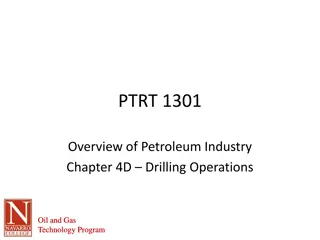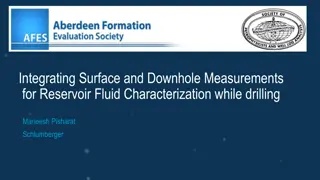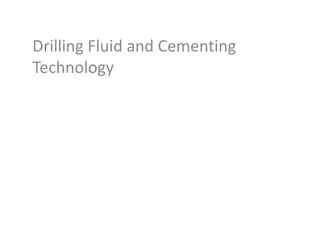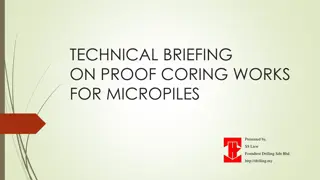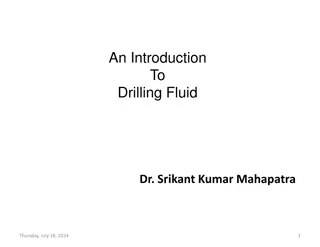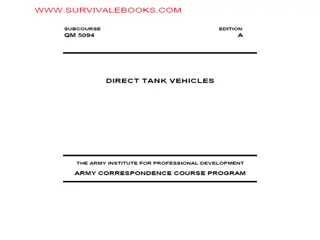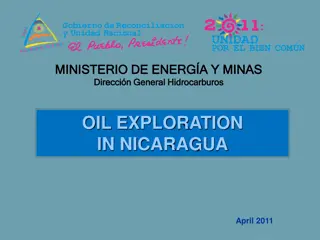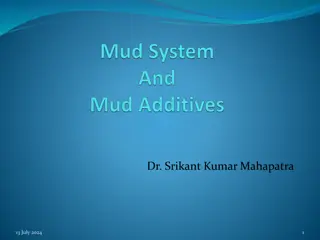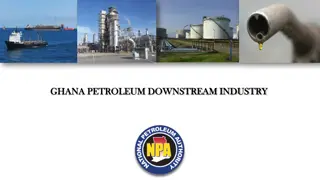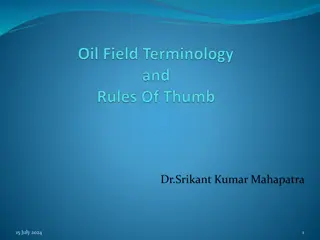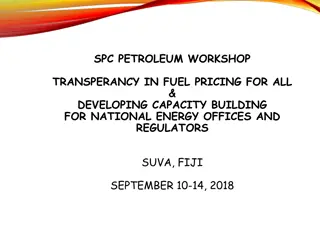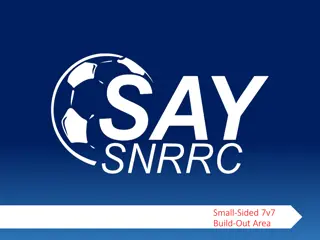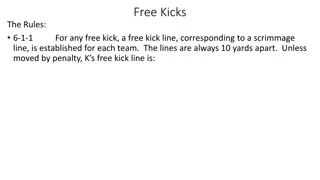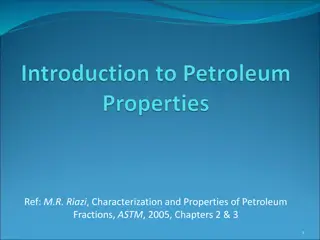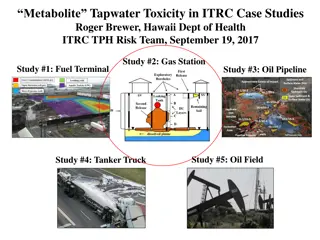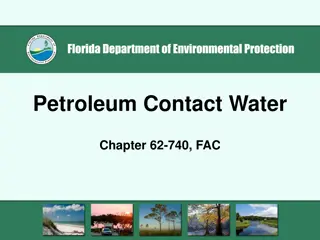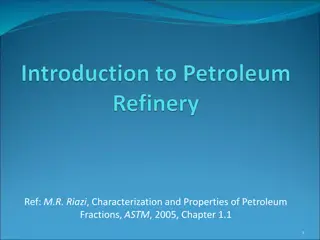Understanding Kicks in Petroleum Drilling Operations
A kick in drilling occurs when formation fluid flows into the wellbore due to formation pressure exceeding mud column pressure. Causes include insufficient mud weight, swabbing, and loss of circulation. Monitoring mud levels and flow rate are crucial for early detection and control of kicks. Proper well planning, casing, and blowout preventer design are essential for managing pressure during drilling phases.
Download Presentation

Please find below an Image/Link to download the presentation.
The content on the website is provided AS IS for your information and personal use only. It may not be sold, licensed, or shared on other websites without obtaining consent from the author. Download presentation by click this link. If you encounter any issues during the download, it is possible that the publisher has removed the file from their server.
E N D
Presentation Transcript
Kick Submited to :- Er Akash Rana Submitted by:- Devahish Yadav B.Tech IIIrd Year Petroleum Technology 1
1. introduction of kick 2. causes of kick 3. Indicate of kick a. mud pit level/flow increase b. incorrect fill up during trips. c. Increase pump rate d. decrease drill string weight 4.Control of kick 3
A kick is the term used to describe the inflow of formation fluid into the wellbore during drilling operation. This arises due to the formation pressure being greater than the hydrostatic pressure imposed by the mud column. This can happen in a normal or abnormally pressured formations. A kick may be primarily composed of salt water, oil, natural gas or a combination of the fluids. The influx of formation fluid may arise for a variety of reason. 4
Insufficient mud weight; Swabbing; Not keeping the hole full; Loss of circulation (partial and full); Kicks occurring during drilling operations most often occur due to insufficient mud weight. Kicks generally occur during trips with the influx occurring from a combination of swabbing and failure to keep the hole full. Swabbing is the result of the piston effect of the drillpipe due to excessive trip speed resulting in instantaneous vacuum being created below the bit 5
The casing and blowout preventer (BOP) are designed for the different expected pressures during each drilling phase. This is determined during well planning. The pressure requirements are based on the maximum anticipated pressures caused by a gas kick. 6
1. Mud Pit Level / Flow Increase These parameters are major positive indicators. As the influx of formation fluid displaces the mud in the annulus, the pit level would increase in the active mud tanks. There would also be evidence of increase in return flow rate if logged. The effectiveness of pit gain/flow increase depends on: Initial size and type of kick; Mud fluid base and rheology; Minimum sensitivity of the measuring systems 7
If the hole does not take the correct volume of mud for the volume of pipe pulled from the hole then an influx has probably been swabbed into the well bore The driller and mud loggers should be maintaining independent records of volume taken to fill the hole for every 5 stands If the hole fill is not correct go back to bottom and circulate bottoms up to check what is at the bottom of the hole 8
The circulation system is a U-tube. An influx of fluid into the annulus creates an imbalance resulting in a decrease in hydrostatic pressure in the annulus. In such an unbalanced system, gravity helps move drilling fluid down the hole, requiring less energy from the pump. This will result in a decrease in the standpipe pressure 9
Any influx into the wellbore from the formation reduces the buoyancy of the annular drilling fluid. A sensitive weight indicator will register this change in weight as an increase in drill string weight. For very large kicks, fluid may enter the annulus with enough force to cause a decrease in indicated string weight. 10
1) Hydrostatic Pressure (psi)= MW x TVD x 0.052 where: MW = Mud Density (lb/gal) TVD = True Vertical Depth (ft) 2) Circulating Pressure (psi)= (MW x TVD x 0.052) + Pla where: Pla = Annular Pressure Loss (psi) 3) Initial Circulating Pressure (psi)= SPR + SIDP where: SPR = System pressure loss at kill rate (psi) SIDP= Shut-in Drillpipe Pressure (psi) 4) Final Circulating Pressure (psi)= (KMW / MW) x SPR where: KMW = Kill Mud Density (lb/gal) 5) Kill Mud Weight (lb/gal)= MW + (SIDP / (TVD x 0.052)) 11
6) Formation Pressure (psi)= SIDP + (MW x TVD x 0.052) 7) Density of influx (ppg)= MW - [(SICP - SIDP)/(L x 0.052)] where: SICP= Shut in casing pressure (psi) L = Length of influx (ft) 8) Length of kick around drill collars (ft)= Pit Gain (bbls)/ Annular Volume around collars (bbls/ft) 9) Length of kick, drill collars and drill pipe (ft)= Collar Length + [(Pit Gain - Collar Annular Volume) / (D12 - D22 x 0.000971)] where: D1 = hole diameter (inches) D2 = drillpipe diameter (inches) 10) Gas bubble migration rate (psi/hr)= Pa / (0.052 x MW) where: Pa = pressure change over time interval / time interval (hr) 12
1) Pick up the kelly and note the position of tool joints in relation to the drilling spools. 2) Stop the pumps. 3) Open the choke line. 4) Close the annular preventer or ram preventers. 5) Close the choke. 6) Record the pit gain. 13
Pipe rams- have a rubber face moulded to fit around a certain size of drillpipe. If more than one size drillpipe is in use, there must be one set of pipe rams for each size of pipe. Blind rams- completely close off the borehole. As such, they are used only when there is no drillpipe in the borehole; Shear rams- have specially designed cutting structures, which when closed on drillpipe, will cut through the drillpipe and completely close off the borehole. In an emergency, the ram preventers may be manually closed (but only on land rigs and jack-ups). 15
-Annular bop are designed to form a seal in the annular space between the drill pipe and the wellbore are usually mounted at the top of the bop stack. -Consist of an annular rubber sealing element when Pressure is applied close around the drill pipe or killy. -Pressur can be applied progresively the annular Preventer can be made to close on the any size or type. -A slight relaxation of pressure may allow a small leakage Of fluid. Permite the pipe to be rotate within the annular preveter pulled through slowly. 17
A choke manifold is a system of valves used to circulate out a kick and circulate mud of proper weight. This device responds automatically to a kick and can prevent a blowout if properly installed and maintained. 19
After the BOP is closed, high-pressure fluid can be released at carefully controlled rates by use of a hydraulically controlled valve ( choke valve ). The choke line carries these high pressure fluids to the choke. From here the flow goes through the poor-boy de-gasser which removes the free gas. It then returns to the pits for treatment and further de-gassing with the vacuum de-gasser The kill line is used to introduce heavy drilling fluid to the well through a check-valve on the BOP in order to control high formation pressures. It fills the borehole from the top (instead of using the drillpipe to fill the borehole from the bottom). It is also used to fill the annulus when pipe is being tripped out 20
ANY QUERY ? 22


